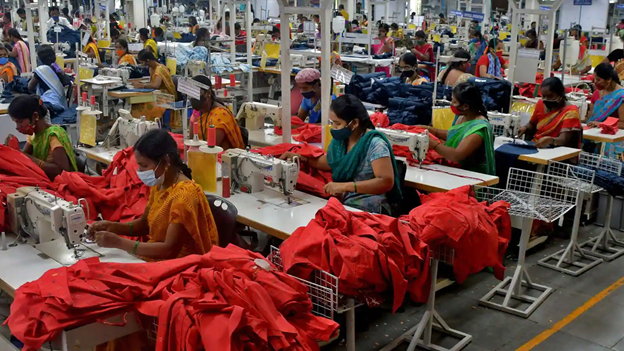(Commonwealth) _ The Indian textile and apparel industry has been a major contributor to the country’s economy and one of the largest employers in the country, particularly for women. It accounts for about 5% of India’s GDP and 15% of its total exports. With the announcement of the budgetary investment of 4,389.34 crore, the government has shown its commitment to boost the industry’s growth and competitiveness.
This investment is expected to address some of the challenges faced by the textile and apparel industry, including low productivity, lack of technology and innovation, and limited market diversification. The funds will be used to support various initiatives, such as setting up of textile parks, upgrading technology and machinery, promoting skill development and training, and improving the export infrastructure.
The AEPC has welcomed the government’s support, stating that it will help the industry to focus on market and product diversification. This is crucial, as India’s textile and apparel exports are currently concentrated in a few markets and product categories. With the support of the government, the industry can explore new markets and products, which will help to reduce its dependence on a few markets and increase its competitiveness. The AEPC has also predicted that India’s goods exports will exceed US$1 trillion by 2030, largely due to the labor-intensive garment industry. This is a significant goal, as it will require the industry to not only increase its exports but also improve its quality and productivity to compete with other global players.
Overall, the government’s investment in the textile and apparel industry is expected to have a positive impact on the industry’s growth and competitiveness, which will benefit the economy and employment in the country. The declaration was made after Piyush Goyal, the Government of India’s Minister of Commerce and Industry, gave a speech at Techotex 2023, an event jointly organized by the Ministry of Textiles, the Government of India, and the Federation of Indian Chambers of Commerce and Industry (FICCI). India’s rising significance in the global supply chain was emphasized by Goyal, who said: “The direction for India is to become an international player playing a vital part in the global supply chain, something that no country has done. To fulfill our potential and the desires of our youthful people, we must integrate our economy with that of other industrialized nations.
The chairman of AEPC, Naren Goenka, has rightly emphasized the importance of improving the ease-of-doing-exports environment to enhance the competitiveness of India’s textile and apparel sector. India’s ranking in the World Bank’s Ease of Doing Business Index has improved significantly in recent years, but there is still much work to be done to simplify regulations and procedures, reduce bureaucracy, and enhance the efficiency of logistics and infrastructure.
The government’s efforts to improve the ease-of-doing-exports environment are expected to complement the investments in R&D, talent development, and other areas. These investments are crucial to enhancing the productivity, quality, and innovation of the industry, which will help it to compete with other global players and explore new markets and product categories.
The trade deals with Australia and the UAE are expected to open up new opportunities for Indian textile and apparel exporters, especially in the high-end fashion and sportswear segments. The rise in funding is also a positive development, as it will enable the industry to upgrade its technology and machinery, invest in sustainability, and improve the working conditions and welfare of its workers.
India’s textile and apparel industry is a major contributor to the country’s exports and employment, and the government’s investments and policy initiatives are expected to help it achieve its potential. The creation of textile parks is a notable initiative, as it will provide a common platform for various stakeholders, such as manufacturers, designers, researchers, and investors, to collaborate and innovate. The boost in extra-lo ng staple cotton output is also expected to enhance the quality and value of Indian textiles, which will help them to command higher prices in the global market.








